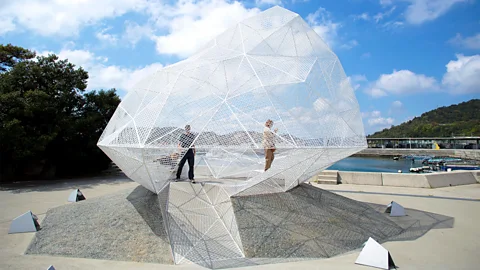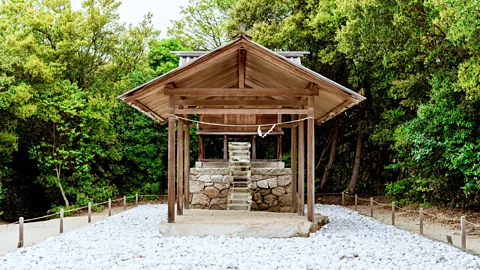The Japanese island that was saved by art
 Alamy
AlamyOnce polluted and suffering from depopulation, Naoshima has become Japan's hottest contemporary art enclave – and there are signs that life there may be finally rebounding.
Shinichi Kobayashi has idyllic memories of growing up on Naoshima, one of the nearly 3,000 islands scattered across Japan's Seto Inland Sea.
"We would go clam digging," said the 75-year-old, who became the island's mayor in 2018. "During the summer, I would spend entire days swimming in the sea, catching turban shells and fish, getting deeply tanned."
"I don't recall seeing any foreign visitors," he added.
Kobayashi's home island is no longer off the tourist radar – thanks to the power of modern art. Since the 1989 launch of what has become Benesse Art Site Naoshima – a multi-island art initiative initiated by billionaire Sōichirō Fukutake – more than 500,000 visitors now flock annually to Naoshima, whose fishing villages, rice fields and craggy coastlines have become the canvas for mesmerising art installations and ambitious museums. In 2010, the Setouchi Triennale launched. The contemporary art festival – which is now one of Japan's foremost international art events – attracts roughly one million visitors to the region each Triennale season. The sixth edition kicked off on 18 April this year and will run until 9 November; the longest Setouchi Triennale ever.
 Alamy
AlamyForty years ago, few would have imagined such a transformation. In the early 20th Century, Naoshima had cemented its reputation as a copper smelting hub, but by the 1980s, it was heavily polluted; the raw, rocky land around the Mitsubishi Materials industrial plant denuded of vegetation. The population dwindled dramatically as the young left to seek opportunities in larger cities.
Fukutake's father, publishing magnate Tetsuhiko Fukutake, and Naoshima's then-mayor, Chikatsugu Miyake, aspired to revitalise the bleak area by founding a children's campground. Tetsuhiko died before the project was completed, leaving it to his son. Shocked by Naoshima's pollution, the younger Fukutake purchased a large swathe of the island's unblighted south side. His new plan: to transform the region by erecting attractive museums against its serene coastal landscapes. To enact his vision, he tapped Osaka-born architect Tadao Andō, who had become known for deg buildings that blended seamlessly into their surroundings.
"I was surprised by the idea and thought it would be difficult to achieve," Andō said in a 2018 interview where he and Fukutake discussed the project's origins. "It was so inconvenient! Who would come here">window._taboola = window._taboola || []; _taboola.push({ mode: 'alternating-thumbnails-a', container: 'taboola-below-article', placement: 'Below Article', target_type: 'mix' });
